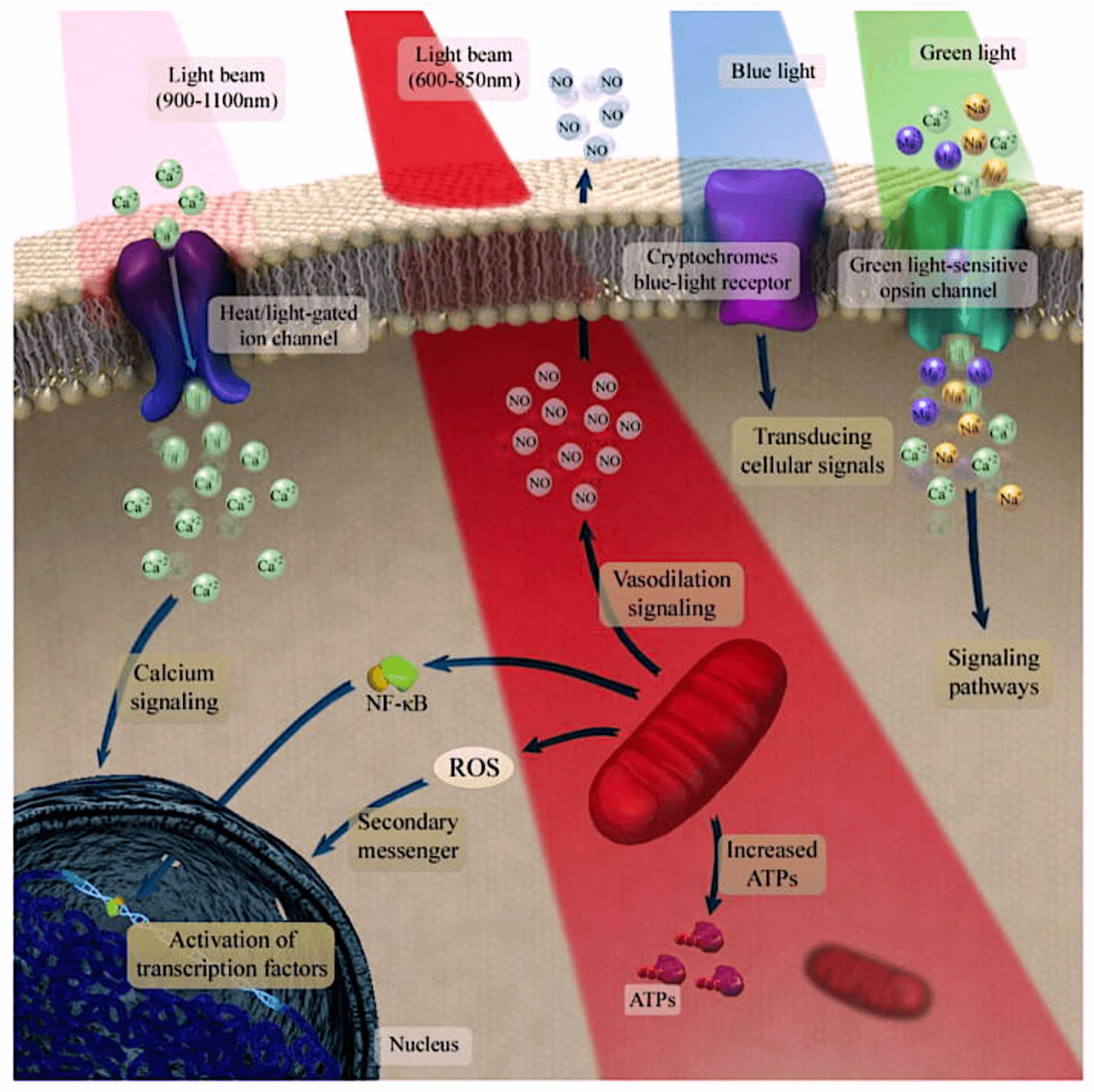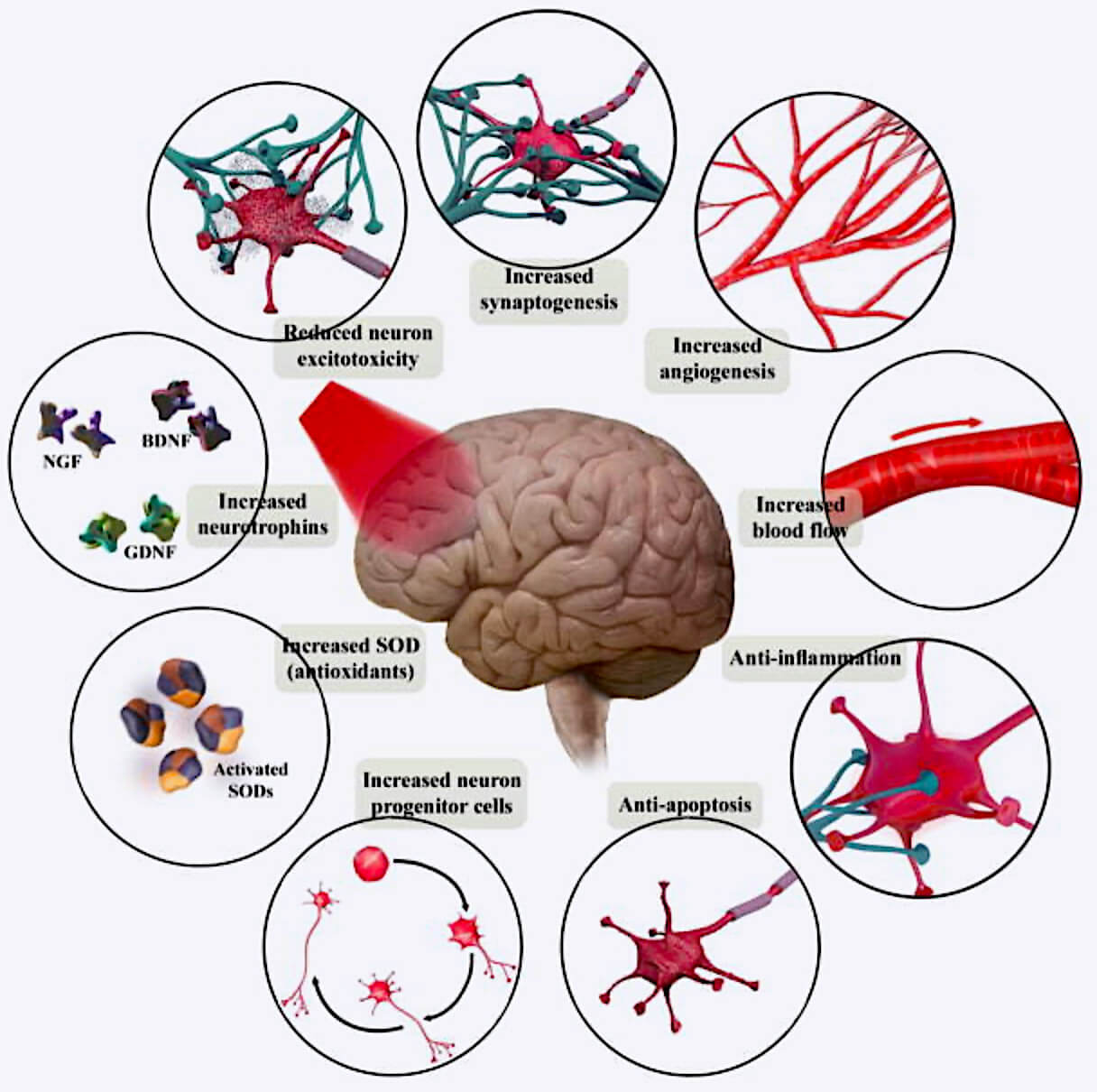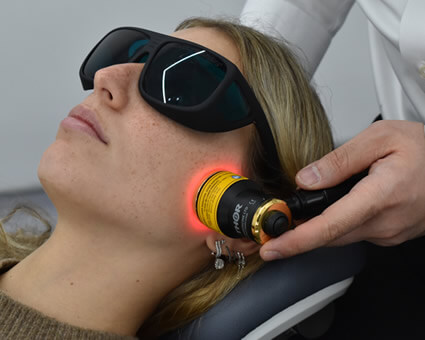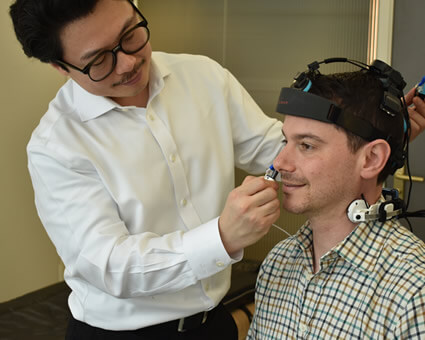PhotoBioModulation Therapy in London
The Injury Resolver
Photobiomodulation (PBM) is a therapeutic process that enhances mitochondrial function by absorbing light energy, specifically within the red to near-infrared (NIR) wavelength range. Mitochondria, often referred to as the “battery” of cells, generate the energy required for various biochemical reactions and cellular functions. By improving mitochondrial health, PBM supports tissue repair (including skin wounds, muscles, tendons, bones, and nerves), reduces inflammation, and alleviates pain.
Scientific research on PBM has been ongoing for over a decade, resulting in thousands of published studies validating its efficacy.
How Does PBM Work?
PBM primarily targets a mitochondrial protein called cytochrome c oxidase. This interaction boosts the production of ATP (adenosine triphosphate) and reduces oxidative stress. The resulting cascade of mitochondrial and intracellular effects promotes tissue repair and decreases inflammation.

The mechanisms of photobiomodulation (633nm-850nm). Source: Wellman Center for Photomedicine at Massachusetts General Hospital, Harvard Medical School.
Optimal Dosage: Finding the Balance
PBM effectiveness is dose-dependent. If the power density is too low, there may be no therapeutic effect; if it’s too high, it can have inhibitory effects, potentially slowing down healing and diminishing the anti-inflammatory benefits.
PBM for Pain Relief
For analgesia (pain relief), PBM requires higher power densities—typically over 300mW/cm². At these levels, PBM can reduce ATP production in certain nerve fibres (C fibres and A delta fibres), leading to an immediate nerve blockade that can last up to 24 hours.
Different Types of PBM
There are two distinct types of PBM based on power density:
- High Power Density PBM: Necessary for analgesia and targeting deep tissues.
- Low Power Density PBM (<100mW/cm²): Effective for promoting healing and reducing inflammation in superficial wounds, tendons, and joints.
For comprehensive treatment, we use both high and low power densities to ensure deep penetration, effective healing, and optimal pain relief.
How PBM Complements Chiropractic Care
This therapy is often used in combination with other healing modalities and provides additional benefits, including reduced inflammation, accelerated muscle tissue healing, improved circulatory functions as well as powerful analgesic effects.
Are There Any Side Effects?
Unlike most pharmaceutical solutions and other therapeutic options, PBM is non-toxic, non-invasive and in over one million individual applications, no significant adverse effects have been noted.
Our hospital-grade PBM equipment is actively in use in over 5,000 cutting-edge clinics and hospitals across more than 70 countries. It holds clearances from FDA, CE, TGA, and NATO, it is officially listed on GSA and eCAT in the United States for government procurement.
Several organisations utilise the same equipment as our practice, including:


Brain Photobiomodulation Benefits
MRI scans demonstrated improved functional connectively and oxygenation in specific networks in the brain”
Brain Photobiomodulation (Brain-PBM) delivers light energy directly into the brain, enhancing brain function by stimulating brain cells to operate more efficiently. This process boosts cellular activity, improves cerebral blood flow, reduces inflammation, increases energy production, and promotes the release of growth factors that support healing and regeneration.
The benefits of Brain-PBM are wide-ranging, enhancing brain function at various levels. For those seeking improved mental clarity, such as meditators, it can enhance day-to-day cognitive abilities. For an ageing brain, Brain-PBM helps maintain optimal performance in line with one’s age. Crucially, research in this area is advancing, with promising early evidence suggesting that Brain-PBM may benefit impaired brains, potentially aiding in the recovery of lost function or slowing cognitive decline associated with neurodegenerative diseases.

Biomechanisms of brain photobiomodulation. Source: Wellman Center for Photomedicine at Massachusetts General Hospital, Harvard Medical School.
In our clinics, we utilise the 810 nm wavelength within the NIR range. This specific wavelength has been extensively studied and has produced the most published clinical results in brain photobiomodulation therapy.


The Vielight Neuro Gamma improves functional connectivity between nodes of the Default Mode Network. Source: fMRI study by the University of California San Francisco.
*Currently, “brain photobiomodulation” is classified as a wellness therapy, with ongoing research continuing to explore its full therapeutic potential.
Frequently Asked Questions
How much is enough, and how much is too much?
What is the analgesic mechanism?
What is near-infrared (NIR) light?
What conditions does Brain-PBM help with?
Learn More Today
Contact us today to find out more about this cutting-edge therapy, or to book your appointment.
CONTACT US




